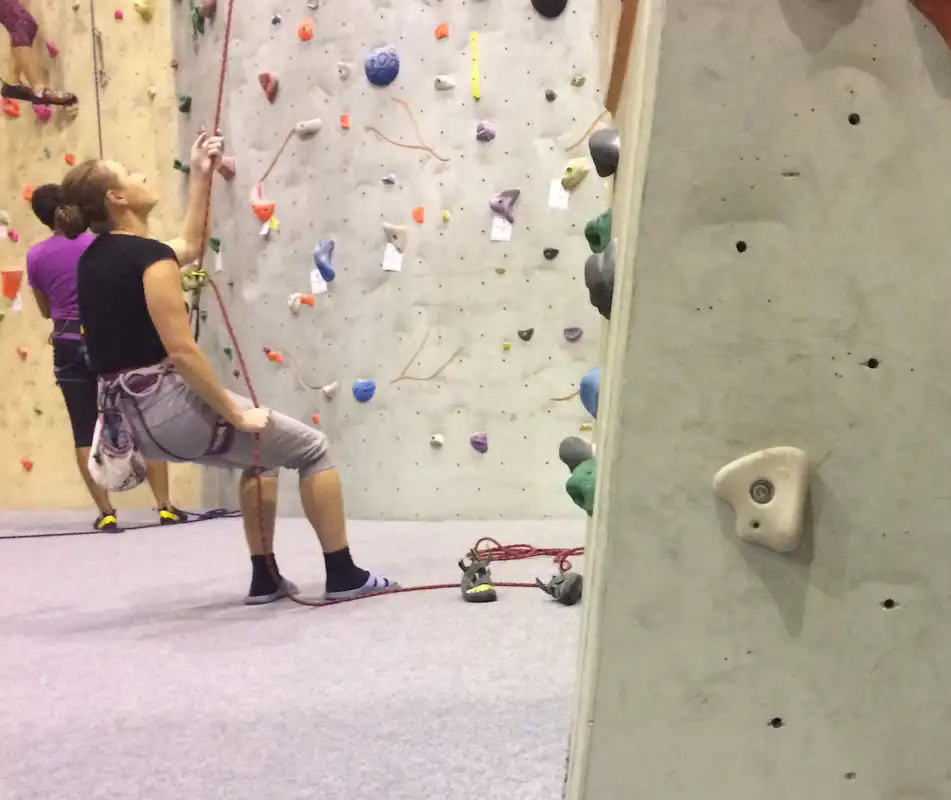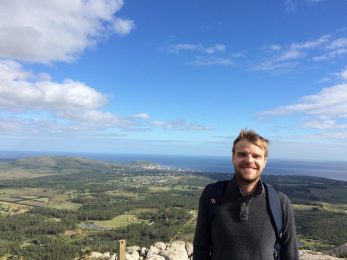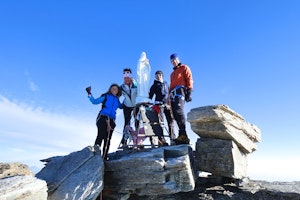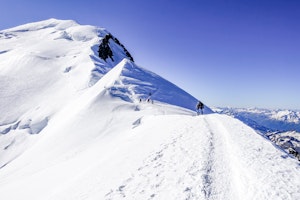As roughly one-third of the world’s population – nearly 2.5 billion people – enter into or remain under a coronavirus-related quarantine, taking the time to do some indoor exercises is a healthy and productive way to pass the time.
Whether you had planned that first mountaineering or rock climbing trip of the summer or simply wanted to get in one last late-season ski touring adventure, there are plenty of ways to stay fit while remaining indoors.
Regardless of the type of outdoor adventure you are planning, a lot of the training required for each is very similar. All three of the aforementioned activities require flexibility, cardiovascular endurance and strength training. Most regimes for the three will overlap.
The amount of training you need to do prior to your trip largely depends on a couple of factors: what is your base level of fitness, how challenging the trip will be and how much time you will spend at high altitude.
While it is never too early to begin training, most guides recommend starting two to three months prior to the start of the trip for people in good physical condition. Those who are not in good physical condition or attempting more challenging climbs and programs will need to train for longer.
Ski touring requires the use of many unique muscles, some of which we do not frequently use in our day to day lives. Photo courtesy of Josef.
Once you have begun your training regime, it is important to do so in a safe and effective way, in order to prevent injury. This means starting each day of training with a warm-up and some stretching and ending with a cool down and more stretching.
It is important to start your training regime slowly and stay hydrated throughout. Stop exercising if you feel prolonged soreness in a single muscle or group of muscles and consult a doctor if you sense an injury.
While worldwide efforts to limit the spread of Covid-19 are keeping many people indoors, the techniques and routines learned and practiced now can be useful on a number of other occasions, including rainy days and cold winter months.
The worldwide quarantine is only temporary, but the indoor training skills you adopt now will come in handy year in and year out.
1| Mountaineering
As winter slowly turns into spring across the Northern Hemisphere, many eager and aspiring mountaineers will already be planning their first mountain climbing trip of the season.
Along with checking your gear, booking plane tickets and hiring a certified guide, it is important to make sure you are in the proper physical condition to head out into the mountains.
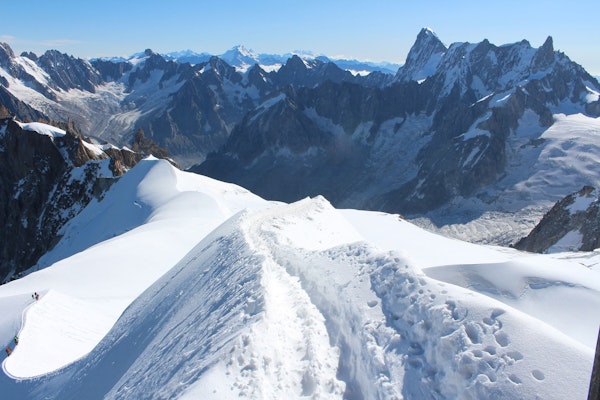
Cardiovascular endurance, upper body strength and proper breathing techniques are all required to arrive at the summit of Mont Blanc. Photo courtesy of Kyriakos.
Improving your cardiovascular endurance, upper body strength and core strength will go a long way in improving your chances of success on your next mountaineering adventure and your enjoyment of the experience too.
To improve cardiovascular strength, guides recommend jogging on a slanted treadmill or climbing up a stair machine. For those without access to one of these two, doing step-ups on an elevated surface at home or climbing actual stairs also works.
Keep reading: Winter Mountaineering With a Guide, the Perfect Training for Ambitious Climbing Ascents
Along with improving your cardiovascular endurance, doing some weight training is also necessary. However, more emphasis should be given to toning muscles rather than trying to bulk up.
Increasing back and shoulder strength will come in useful for carrying packs and hauling gear. Strengthening your core will help you maintain your balance while climbing.
While any gym will have plenty of equipment to help you strengthen each muscle group, for those without access to a gym, doing isometric exercises (the static contraction of a muscle without moving it) can be equally as effective.
These can be done at home without the use of any equipment. Isometric exercises mostly help to maintain strength but can help you build strength as well.
Carrying a weighted backpack while working on one of the aforementioned cardiovascular exercises is also a great way to strengthen many of the muscles that you will be using during a mountain climbing trip.
Additionally, if you would like to add weight to your training but don’t have specific equipment available, you can use heavy elements such as books and full bottles of water as weights.
Finally, most mountaineering trips will take place at higher altitudes. Preparing your body for physical activity at elevation will make any climbing trip easier.
Practicing different breathing techniques can help prepare your body for coping with lower levels of ambient oxygen at higher altitudes along with the cold.
Why not put this workout regime to the test this summer? Book a 3-day mountain climbing adventure to the summit of Mont Blanc and take on a classic mountaineering challenge!
2| Ski touring
While the ski touring season is winding down in the Northern Hemisphere, there are plenty of late-season destinations available to check out. The skiing season in the Southern Hemisphere is also just beginning!
Unlike resort skiing, where the focus is just heading downhill, ski touring involves plenty of climbing in skins too. Maintaining a high level of physical fitness is important as the sport can be tiring and if you are always stopping to rest or catch your breath, you certainly will not enjoy what is normally an unforgettable experience.
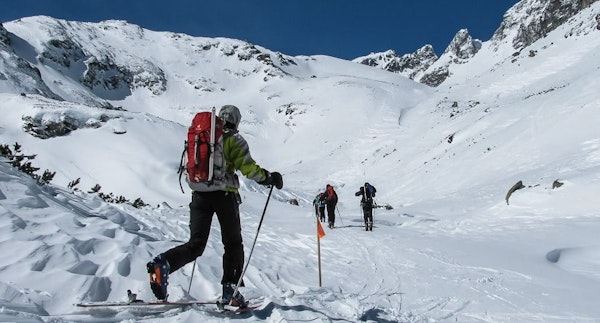
Traversing the highest mountains in the central European Tatra Range can be quite a workout. Photo courtesy of Miki.
As with mountaineering, improving your cardiovascular strength will be the first step to preparing for a ski touring trip. The best way to do so is to run or cycle for a couple of hours per day, two or three times per week. This will help build your endurance.
While using a treadmill or indoor bicycle machine is the best way to train, it is also possible to run in place, do step-ups on an elevated surface, or climb stairs.
As you feel your cardiovascular strength increasing, add a pack to your training to help increase the stamina and strengthen your shoulder and back muscles as well.
Keep reading: How to Prepare for a Ski Touring Adventure
Along with improving cardiovascular endurance, it is also important to strengthen your core and leg muscles. Ski touring descents require the constant use of many different muscles that are not normally used.
The best way to strengthen these is various leg exercises, including leg presses, leg extensions, and leg curls. These exercise your quad muscles and hamstrings. Carrying a heavy pack while walking down the stairs is also a good way to strengthen your calf muscles.
Rollerblading is another great activity to practice for skiing, and skate to ski training programs are popular to train the muscles and movements required for the sport, outside the winter season. Although rollerblading is difficult to practice indoors, treadmill rollerblading is actually a thing and might be an interesting option for those in more restricted situations.
Doing all different types of sit-ups will help strengthen your core muscles. Slowly adding resistance to your sit-up routine will help prepare you for the challenges of winding down slopes on a pair of skis as well.
For those heading on multi-day ski touring adventures, it is important to focus on stamina more than weight resistance as these types of ski touring trips will require hours of climbing and descending.
Similar to mountaineering, most ski touring trips take place at high elevations. Working on several different breathing techniques will also prepare you for the cold and thin mountain air.
So what are you waiting for? Once you’ve trained and toned those ski touring muscles, put them to the test with a 3-day ski touring odyssey through the High Tatras!
3| Rock climbing
Just like mountaineering, as the snow and ice begin to melt from northerly mountain ranges around the world, the time to head out on an epic rock climbing adventure is just beginning.
From novice climbers looking for their first outdoor climbing adventure to more experienced ones planning a challenging but rewarding alpine holiday, it is important to make sure that you are in peak condition before heading out onto the rocks.
Indoor rock climbing is a great way to train for the outdoors, but even if you don’t have access to a gym or to a climbing wall in your living room, there is still plenty you can do to train from home while you figure out how to build one.
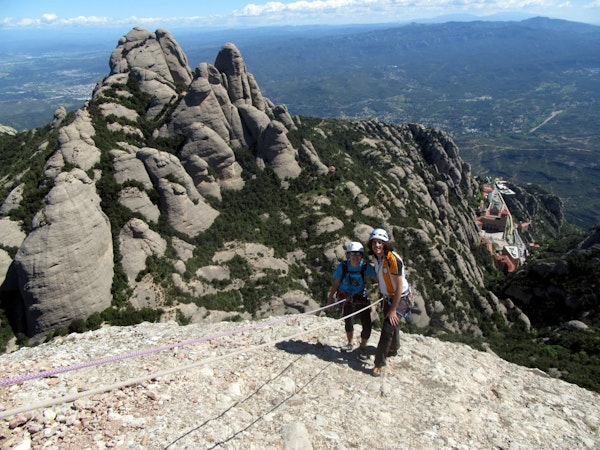
Spend some time this spring doing some rock climbing-related workouts indoors. Destinations such as Barcelona are available year-round. Photo courtesy of Marc.
Rock climbing is both similar and different from the two aforementioned outdoor activities. Any successful rock climbing trip will require good stamina and cardiovascular endurance as well as a strong core and good upper body strength.
However, rock climbing also utilizes some very different muscles from either ski touring or mountaineering and therefore requires some very different types of exercises.
Improving contact strength is important for all climbers. This simply means strengthening the parts of your body that will be holding you to the rock, such as your fingers. This can easily be done at home or at the gym.
Keep reading: What is Rock Climbing? Types, Equipment, Top Spots
For serious climbers, investing in and hanging a fingerboard is a great idea. Hanging from these fingerboards will strengthen your core, fingers, and wrists.
For beginners, it will be important to work on endurance and ease into the exercise. This may mean standing on a chair one meter (three feet) behind the board and alternating dead hangs for 15 to 25 seconds.
This will begin to build up your strength. You can lengthen the sessions and begin putting more weight onto your fingers as you improve.
Once you have built up a solid base level of strength, you can move on to further strength training, including dead hangs. Starting right away with these, however, will likely result in pulling a tendon.
For those who do not have a fingerboard, the same basic finger and wrist muscles can be exercised using a solid door frame. Consult a certified rock climbing guide to determine the best finger strengthening exercises for you.
Along with your fingers, rock climbing also requires the intense use of the latissimus dorsi, on the sides of your back, biceps, forearm flexors and gastrocnemius and soleus muscles, both of which are in the feet.
Various calisthenics and improvised exercises can be used to help you strengthen these muscles. With foldable chairs and a table, it is possible to do lateral pull-ups, inclined push-ups and chair ups, each of which exercises some of the aforementioned muscle groups.
As with ski touring and mountaineering, proper breathing techniques are also crucial to rock climbing success.
Taking the time to learn these techniques, which can easily be done at home, will nicely complement the rest of your physical training and better prepare you for the mental challenges of rock climbing.
Don’t hesitate for too much longer! Put some of these climbing exercises to the test and head out on a multi-pitch rock climbing initiation course in Catalonia (available year-round)!

Rock climbing and bouldering on Portugal’s Atlantic Coast requires plenty of contact strength and endurance. Photo courtesy of João.
While many people may be yearning to get outside and head out on any number of incredible outdoor adventures, it is worth remembering that now more than ever is the perfect moment to brush up on some indoor exercise techniques.
In preparation for that next rock climbing, mountaineering or ski touring trip, take some time to learn and practice indoor exercises. From mandatory quarantines to rainy or snowy days, these techniques will help you prepare for your next adventure from the comfort of your own home.
